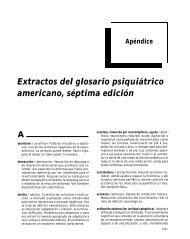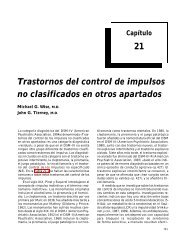M - PDFuploader
M - PDFuploader
M - PDFuploader
Create successful ePaper yourself
Turn your PDF publications into a flip-book with our unique Google optimized e-Paper software.
Tema 13 El modo imperativo<br />
Las formas del imperativo de los verbos auxiliares son irregulares:<br />
haben hab keine Angst!<br />
= ¡no tengas miedo!<br />
sein sei bitte pünktlich!<br />
= ¡por favor, sé puntual!<br />
werden werde doch nicht gleich nervös!<br />
= ¡no te pongas nervioso!<br />
G 13.3. Tratamiento de Sie (singular y plural)<br />
La forma del imperativo coincide con la 3ª persona del plural del presente<br />
de indicativo. El pronombre personal Sie se coloca siempre detrás<br />
del verbo:<br />
3ª persona plural del<br />
presente de indicativo<br />
Imperativo<br />
sie kommen kommen Sie!<br />
sie fragen fragen Sie!<br />
sie bleiben bleiben Sie!<br />
sie nehmen nehmen Sie!<br />
sie arbeiten arbeiten Sie!<br />
sie freuen sich freuen Sie sich!<br />
sie sind (excepción) seien Sie ganz ruhig!<br />
G 13.4. Tratamiento de ihr<br />
= ¡Venga! ¡Vengan!<br />
= ¡Pregunte! ¡Pregunten!<br />
= ¡Quédese! ¡Quédense!<br />
= ¡Tome! ¡Tomen!<br />
= ¡Trabaje! ¡Trabajen!<br />
= ¡Alégrese! ¡Alégrense!<br />
=¡Esté completamente tranquilo!<br />
¡Estén completamente<br />
tranquilos!<br />
La 2ª persona del plural (ihr) del imperativo coincide con la 2ª persona<br />
plural del presente de indicativo. Se suprime tan sólo el pronombre<br />
personal ihr:<br />
2ª persona plural del<br />
presente de indicativo<br />
ihr kommt kommt!<br />
ihr fragt fragt, bitte!<br />
Imperativo<br />
ihr nehmt nehmt, bitte!<br />
ihr freut euch freut euch!<br />
= ¡Venid!<br />
= ¡Preguntad, por favor!<br />
= ¡Tomad, por favor!<br />
= ¡Alegraos!






